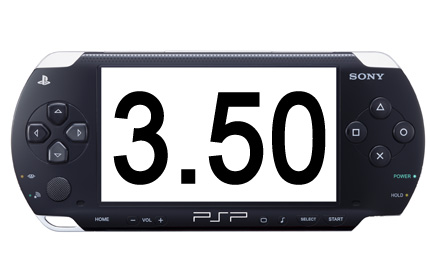
Here are the fairly official technical specifications of Sony’s flagship handheld:
· Size: 170 mm (6.7 in) in length, 74 mm (2.9 in) in width, and 23 mm (0.9 in) in depth, weighs 280g / .62 lbs (Source:Wikipedia)
· Processor: 32-bit MIPS “R4000” 4KE or 24KE, dual-core. Primary core is for standard system functions, including hardware-based data decryption. Second core, called the “Virtual Mobile Engine,” is for graphics processing, including native H.264 decoding.
o Speed: 1-333 MHz (although Sony has made mention to a cap of 222 MHz to conserve battery life) Programmers can get around the 222 MHz barrier in code.
o Runs on 0.8 to 1.2 volts
o Designed using a 90-nanometer process
· Graphics: Runs at 166 MHz, reconfigurable to handle particular processing tasks.
o 2 megabytes video memory
o Supports a maximum of 33 million polygons/second, although the effective polygon performance is likely much lower (many critics don’t like the “max” polygons rating because it excludes the use of effects like lighting, fog, and so forth)
o 664 million pixels/second maximum fill rate
o 512-bit interface
o Supports 16-bit and 32-bit color modes (32,768 colors and 16.77 million colors)
· Audio: Supports Stereo sound, Dolby Headphone sound. Supports playback of WAV, ATRAC and MP3 (MPEG-1 Audio Layer 3) audio in Firmware 1.0 and 1.5, and adds AAC (MPEG-4) audio in Firmware 2.0.
· Display: 4.3” (diagonal) 480 × 272 Widescreen display, 16:9 aspect ratio, just like widescreen DVDs and HDTV
· RAM: 32MB of RAM. 4MB of DRAM; half (2MB) is connected to the main core, and the other 2MB is for media processing functions.
- Storage:The PSP has the following storage capabilities:
- Sony Memory Stick Duo slot takes only Memory Stick Duo media
o UMD discs support up to 1.8GBeach and basically any type of data. Official formats include UMD-Game, UMD-Video, and UMD-Music. This appears to be based on Sony’s MiniDisc format.
o USB 2.0 port supports data transfers up to 480 megabits/second. ■ Supports sharing of files on inserted Memory Stick with a USB-capable computer.
· Power: Includes 1800 mAh Lithium Ion (LIon) battery, provides 4–6 hours of battery life (Sony offers an official 220 mAh battery as well, and third parties such as Datel have batteries providing 3600 mAh).
- A/C charger included with package yields 2000 mAh
- Capable of charging using power provided via a computer’s USB 2.0 port
- Networking: Built-in 802.11b (11 megabits/second max throughput) wireless supports both ad hoc (computer-to-computer) and infrastructure (device-to-access point) modes.
- IrDA (Infrared Data Association) line-of-sight communications
- IR Remote (SIRCS compliant), although no “official” remote control software was available at the time this book went to press
- Potential to use USB port for other networking devices, should they ever beReleased
· Navigation system: Uses Sony’s XMB, or Cross Media Bar, interface, used in some Sony TVs and their PSX product. (I call this the “PSP Navigator” in this book.)
- Region coding: Supports region coding of games, music, movies, and photos on UMD discs, similar to how DVDs do the same thing to prevent media use in other regions of the world


 Compared to other portable gaming systems, the PSP is not only more powerful, it’s also more power hungry. Indeed, with a 333 MHz processor, ultra-bright widescreen color display, wireless networking, and an optical UMD drive to run, the battery is working overtime to make sure you stay entertained for hours on end. Thankfully, Sony has included a rechargeable 1800 mAh Lithium Ion battery to help out—normal alkaline batteries wouldn’t survive the load for long and would be darn expensive to replace all the time. On a full charge, you will get (and independent organizations have confirmed this) up to six hours of battery life when playing video games, and up to four hours for movies. This is assuming you’re running the screen at half intensity and half volume with wireless off. I tend to run with the brightness and volume all the way up, so take about 10 percent off that figure if you play the same way.
Compared to other portable gaming systems, the PSP is not only more powerful, it’s also more power hungry. Indeed, with a 333 MHz processor, ultra-bright widescreen color display, wireless networking, and an optical UMD drive to run, the battery is working overtime to make sure you stay entertained for hours on end. Thankfully, Sony has included a rechargeable 1800 mAh Lithium Ion battery to help out—normal alkaline batteries wouldn’t survive the load for long and would be darn expensive to replace all the time. On a full charge, you will get (and independent organizations have confirmed this) up to six hours of battery life when playing video games, and up to four hours for movies. This is assuming you’re running the screen at half intensity and half volume with wireless off. I tend to run with the brightness and volume all the way up, so take about 10 percent off that figure if you play the same way.
